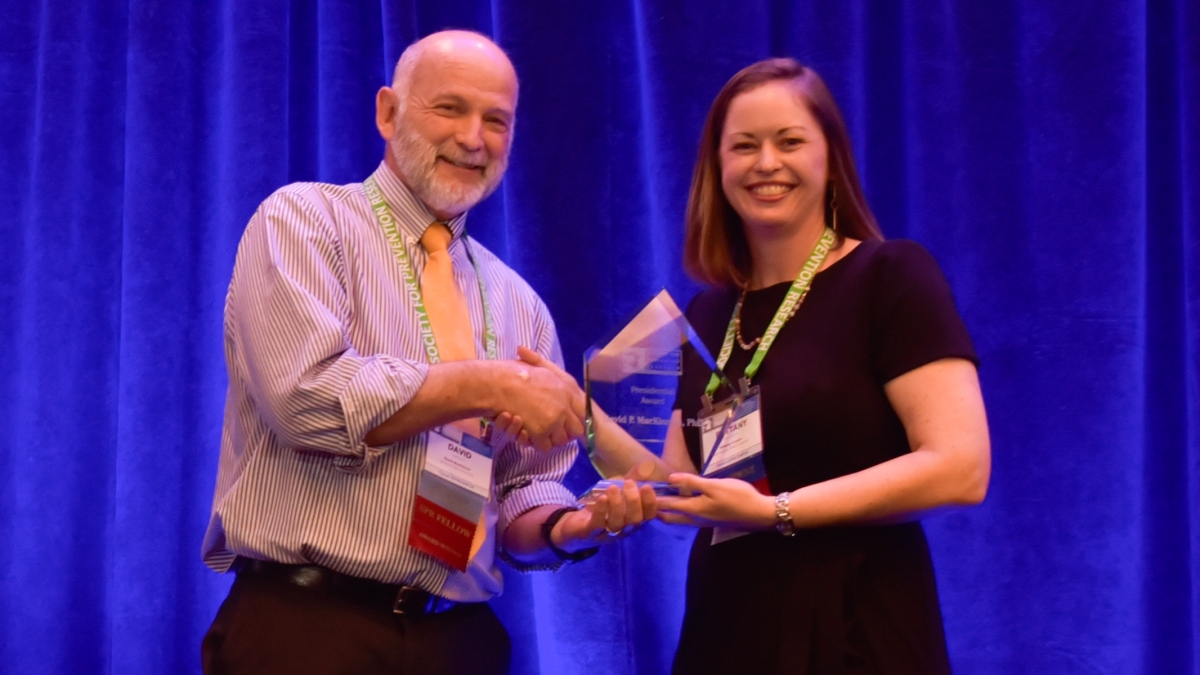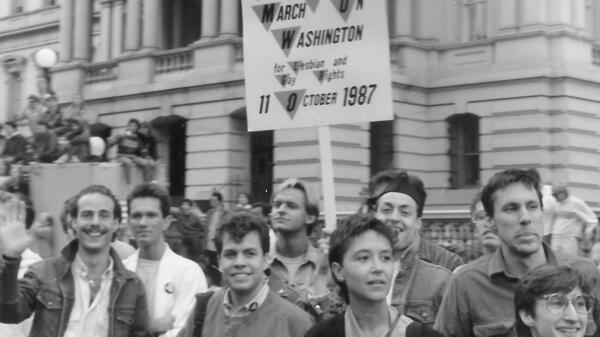Professor recognized for research on preventing mental, physical health problems

David MacKinnon (left), Regents Professor of psychology at ASU, receives the 2024 Presidential Award from the president of the Society for Prevention Research, Brittany Cooper. The award recognizes major contributions to research preventing mental and physical health problems. Courtesy photo
Benjamin Franklin wrote in 1735 that “an ounce of prevention is worth a pound of cure.”
He was actually referring to fire prevention for the city of Philadelphia, but this adage has since been extended to prevention science, which focuses on how to improve physical and mental health.
Prevention science researchers like David MacKinnon, Arizona State University Regents Professor of psychology, seek to understand why treatments and interventions work and how risk factors can lead to substance use, mental and physical health problems, and adverse academic performance.
Answering these “how” and “why” questions often relies on mediation analysis, a statistical method that lets scientists trace the pathways that connect risk factors to treatment variables and outcomes.
MacKinnon has worked for 35 years on developing mediation analysis methods that are useful to psychology, sociology, biology and medical researchers. He recently won the Presidential Award from the Society for Prevention Research in recognition of prevention science research that has had a far-reaching impact.
In the early 1990s, when MacKinnon joined ASU and when the Society for Prevention Research was founded, the field of prevention science was a fledgling. MacKinnon was one of the founding members of the society, which is now made up of doctors, clinical psychologists, health policy experts and theoretical statisticians. Mediation analytic strategies MacKinnon developed are used across disciplines, and the National Institutes of Health (NIH) recommends research proposals to include a section evaluating why and how treatments or interventions work.
The NIH has also recognized the impact of MacKinnon’s work on mediation analyses. He has received a Method to Extend Research in Time (MERIT) Award from the National Institutes of Drug Abuse. MERIT awards are unique in that scientists cannot apply for them; the small number of recipients are identified by NIH as being outstanding researchers with superior productivity and competence.
MacKinnon spoke to ASU News about the Society for Prevention Research award and his contributions to prevention research.
Question: What does winning the Presidential Award from the Society for Prevention Research mean to you?
Answer: I value this award because it represents a career of work in prevention science, a field that has scientific and practical application. I like using science and math to address serious health problems like smoking, drug abuse and heart disease.
When I was first starting out, the feedback I would get when I submitted mediation analysis papers for publication included suggestions that I work on something else. I didn’t though, because I knew mediation was a good idea and is useful. It took about 20 years for mediation methods to take off into what they are today. ASU played a big role in this success, by giving me the support to do what I needed as a scientist and by surrounding me with great colleagues.
Q: Which of your contributions to prevention research have been the most meaningful to you?
A: My work on mediation analyses has had wide-reaching effects. Now, when people carry out interventions, they think about how they work both during planning and after a study is finished. In the past, the methods did not exist to ask why and how something worked. It seems hard to believe because funding proposals to the National Institutes of Health now recommend analysis of how an intervention works, and leading journals like the Journal of the American Medical Association now include guidelines for reporting mediation analyses.
Q: What are you most excited about for the future of prevention research?
A: For example, one focus of researchers who study intervention effects is ways to address the assumptions that go into mediation analyses. This type of work includes a lot of variables and asks what is the best, most efficient way to use all that information to address how things work. During my career, computational power has grown, and I am excited to see the things that will be possible just because of faster computation.
More Health and medicine

Biostatistics Consultation Core offers pipeline to completion for researchers
Tempo Together, a Sacramento, California-based start-up, has a mission to help people with disabilities get access to the services they need. To do so requires compassion, creativity — and crunching…

Hurricane changed 'rules of the game' on Monkey Island to foster more cooperation
In 2017, Hurricane Maria became the largest catastrophe in the history of Puerto Rico, killing over 3,000 people, knocking out power to nearly all of the island and causing more than $100 billion in…

Lessons from HIV/AIDS: ASU dean reflects on advancing research of public value
The first known cases of acquired immunodeficiency syndrome (AIDS) in the United States were documented in a June 5, 1981, Morbidity and Mortality Weekly Report published by the U.S. Centers for…